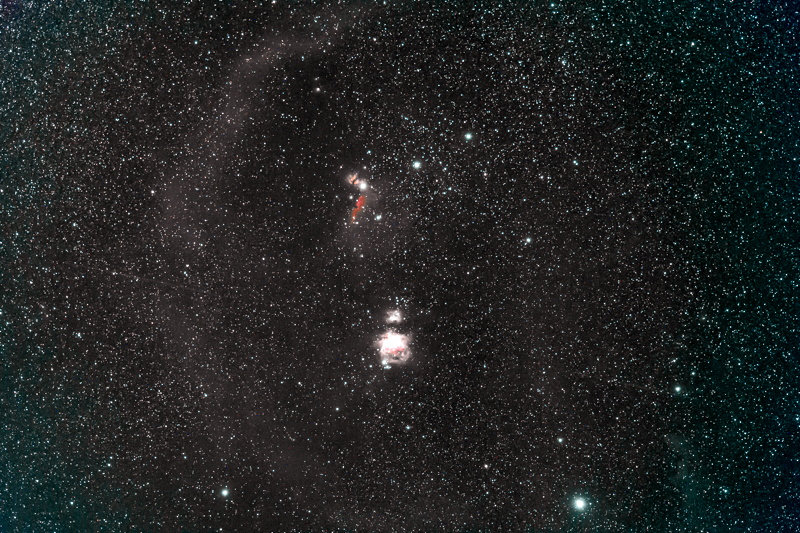Piggyback DSLR Imaging with UHC Filter
Posted: 6 January 2021
|
Open: Tuesday, 5 January 2021, 1819 MST Temperature: 63°F |
Session: 1584 Conditions: Clear |
Equipment:
12" f/8 LX600 w/StarLock
2" 24mm UWA eyepiece
2" UHC filter
Camera:
D7200 DSLR
1823 MST: LX600 ON, StarLock OFF, High Precision OFF.
Viewed Saturn and Jupiter on what was likely the last opportunity before they get too low in the southwestern sky. Saturn, 102X, was just an oblong blog with no details visible. Jupiter, 102X, showed no details but the four Galilean Moons were visible.
1834 MST: as it was unseasonably warm (58°F) for early January at 4350' elevation, I decided to relax on the observatory patio bench to watch the stars come out. I needed the therapeutic relaxation after a very frustrating day dealing with the dangerous and unfair consequences of the flawed federal STELA legistion (see my STELA blog; I will update it in a few days with details of this day's experience).
While I was relaxing on the bench I saw a 4-ship flight of jet fighters (A-10 or F-16) flying away from Tucson on a night mission. The sight reminded me of night missions I had during my A-7D jet fighter pilot training at Davis-Monthan AFB in Tucson in 1974.
1923 MST: the temperature had rapidly dropped to 49°F so I ended relaxing on the bench.
1931-1952 MST: took a short break.
I then began setting up for piggyback imaging of Orion. I removed one of the two finderscopes and mounted the D7200 DSLR with 70-300mm lens on the 12" telescope using the ScopeStuff Camera Mount. I would image several objects this session with and without the Explore Scientific 2" UHC filter attached to the lens using the Sensei Filter Step-Down Rings.
2014 MST: StarLock ON.
I took the following StarLock autoguided images. These are with the UHC filter. Astronomy Technology Today magazine will publish my review of the Step-Down Rings and UHC filter later this year. The review will show comparison images with and with the filter.
Orion (f/4.5, 10 minutes, ISO 6400, White Balance 5000K, FL 70mm)

Mouseover or tap on image for labels
Flame and Horsehead Nebula (f/5.6, 5 minutes, ISO 6400, White Balance 5000K, FL 300mm)

Rosette Nebula (f/5.6, 5 minutes, ISO 6400, White Balance 5000K, FL 300mm)

2225 MST: StarLock OFF.
During the imaging I adjusted the StarLock Guide Rates and found that RA 60% and Dec 21% worked best this night.
I removed the camera and re-mounted the finderscope.
2242 MST: LX600 OFF.
2250 MST: took a Sky Quality reading and reported the result to Globe at Night.
|
Close: Tuesday, 5 January 2021, 2256 MST Temperature: 45°F |
Session Length: 4h 37m Conditions: Clear, SQM 20.95 |
Comments are welcome using Email. Twitter users can use the button below to tweet this report to their followers. Thanks.
Cassiopeia Observatory Home Page
Copyright ©2021 Michael L. Weasner / mweasner@me.com
URL = http://www.weasner.com/co/Reports/2021/01/06/index.html
